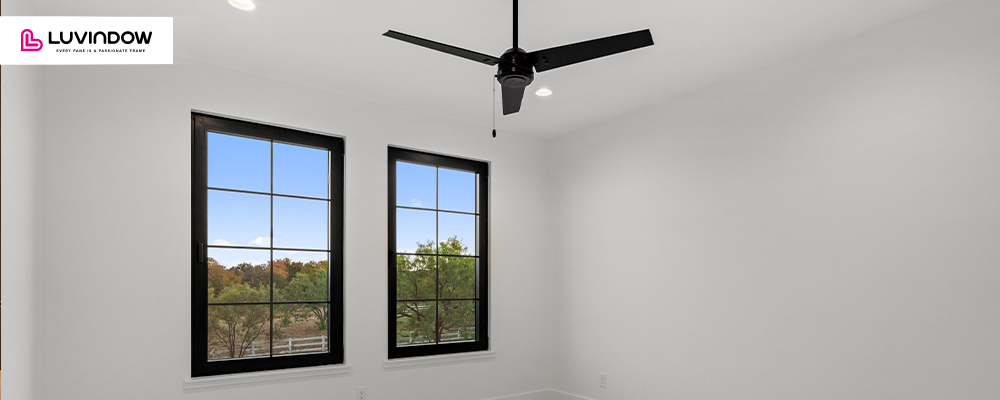The Latest Trends in Windows and Doors: Insights from Casement Windows Manufacturer
Windows and doors play a significant role in enhancing the aesthetic appeal and functionality of a building. With technological advancements and changing consumer preferences, the windows and doors industry is witnessing a shift towards innovative designs, energy-efficient solutions, and sustainable materials. As a leading casement windows manufacturer, we have identified the latest trends in the industry.
Smart Technology Integration
Smart technology, also known as home automation or the Internet of Things (IoT), refers to the integration of electronic devices and appliances with the internet and each other. This technology enables homeowners to control and monitor their homes remotely using smartphones, tablets, or voice-controlled devices such as Amazon Alexa or Google Home.
In the context of windows and doors, smart technology allows for the automation and remote control of window and door functions. For example, sensors can detect changes in temperature, light, and humidity levels and automatically adjust the windows and doors to maintain a comfortable indoor environment. This technology can also be used to control the opening and closing of windows and doors, as well as the locking and unlocking of doors.
Smart technology in windows and doors offers several benefits to homeowners, including:
Convenience: Smart technology allows homeowners to monitor and control their windows and doors remotely, providing added convenience and flexibility.
Energy efficiency: By automatically adjusting the windows and doors based on environmental conditions, smart technology can help reduce energy consumption and lower utility bills.
Security: Smart technology can be used to monitor and control the locking and unlocking of doors, providing added security and peace of mind.
Accessibility: Smart technology can be used to make windows and doors more accessible for people with disabilities or mobility issues.
However, there are also some challenges associated with smart technology in windows and doors. These include concerns about privacy and security, as well as the cost and complexity of installing and maintaining the technology. Despite these challenges, the use of smart technology in windows and doors is expected to continue to grow as homeowners seek more convenient, energy-efficient, and secure solutions for their homes.
Energy Efficiency
With the increasing focus on reducing carbon footprint and energy bills, energy-efficient windows and doors have become a must-have for homeowners. Energy-efficient windows and doors use advanced glass technology, such as low-emissivity coatings and gas-filled panes, to minimize heat transfer and reduce energy consumption. These windows and doors are not only environmentally friendly but also help homeowners save money on their energy bills.
Minimalist Designs
Minimalism is a design trend that has gained popularity in recent years. Homeowners are opting for simple, clean, and uncluttered designs that create a sense of space and tranquility. In the windows and doors industry, this trend is reflected in the popularity of casement windows. Casement windows feature large, unobstructed glass panes that provide a clear view of the outdoors while maintaining a sleek and modern look.
Sustainable Materials
Sustainability is a growing concern among consumers, and the windows and doors industry is responding by incorporating sustainable materials into their products. For example, casement windows can be made from sustainable materials such as timber, recycled aluminum, and composite materials. These materials not only reduce the environmental impact of manufacturing but also provide superior durability and performance.
Incorporating sustainable materials into windows and doors is an important step towards reducing the environmental impact of the building industry. However, there are several challenges that manufacturers face when trying to implement sustainable materials in their products. Here are some of the main challenges:
Cost: Sustainable materials are often more expensive than traditional materials, which can make them less appealing to builders and homeowners. This is because sustainable materials require more resources and energy to produce and may have a limited supply.
Availability: Sustainable materials may not be readily available in all areas, making it difficult for manufacturers to source them in large quantities. This can result in longer lead times and higher costs.
Performance: Sustainable materials may not always perform as well as traditional materials, especially in extreme weather conditions. For example, some sustainable woods may be more susceptible to rot or decay, which can compromise the performance and longevity of the windows and doors.
Maintenance: Some sustainable materials may require more maintenance than traditional materials, which can increase the cost and time required to maintain the windows and doors.
Certification: The use of sustainable materials may require certification or compliance with certain standards, which can be a time-consuming and costly process for manufacturers.
Despite these challenges, incorporating sustainable materials into windows and doors is an important step towards reducing the environmental impact of the building industry. With advances in technology and increasing demand for sustainable products, manufacturers are finding new ways to overcome these challenges and create windows and doors that are both environmentally friendly and high-performing.
In conclusion, the windows and doors industry is evolving rapidly, driven by technological advancements, changing consumer preferences, and sustainability concerns. As a casement windows manufacturer, we are committed to staying ahead of the curve by incorporating these trends into our products. By embracing smart technology, energy efficiency, minimalist designs, and sustainable materials, we can provide homeowners with windows and doors that meet their needs and exceed their expectations.



 Picture Windows
Picture Windows Single Double Hung Windows
Single Double Hung Windows Tilt & Turn Windows
Tilt & Turn Windows Sliding Windows
Sliding Windows Bi-Fold Windows
Bi-Fold Windows Gliding Patio Doors
Gliding Patio Doors Bi-Fold Doors
Bi-Fold Doors Lift and Slide
Lift and Slide  Entry Doors
Entry Doors Swinging Doors
Swinging Doors